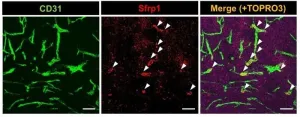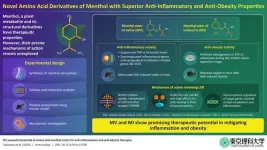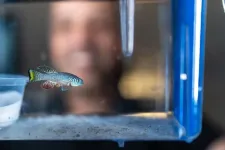(Press-News.org) A paper published in the CABI Reviews journal has found that climate change is the most prominent threat to pollinators – such as bumblebees, wasps, and butterflies – who are essential for biodiversity conservation, crop yields and food security.
The research, which is entitled ‘What are the main reasons for the world-wide decline in pollinator populations?’, suggests that many of the threats to pollinators result from human activities.
Pollinator populations are declining worldwide and 85% of flowering plant species and 87 of the leading global crops rely on pollinators for seed production. The decline of pollinators seriously impacts biodiversity conservation, reduces crop yield, and threatens food security.
Risk of extinction
According to The Intergovernmental Science-Policy Platform on Biodiversity and Ecosystem Services (IPBES), approximately 16% of vertebrate pollinators, such as birds and bats, and 40% of invertebrate pollinators, such as bees and butterflies, are at risk of extinction.
Dr Johanne Brunet and Dr Fabiana Fragoso, authors of the review, argue that efforts to control the various factors that negatively impact pollinators must continue given the dire consequences.
They stress that understanding the drivers of pollinator decline can guide the development of strategies and action plans to protect and conserve pollinators and the essential ecosystem services they provide.
Dr Brunet said, “This review introduces the diversity of pollinators, addresses the main drivers of pollinator decline, and presents strategies to reduce their negative impacts.
“We discuss how managed bees negatively affect wild bee species, and examine the impact of habitat loss, pesticide use, pests and pathogens, pollution, and climate change on pollinator decline. Connections between humans and pollinator decline are also addressed.”
Changes in water and temperature
The researchers believe that the changes in water and temperature associated with climate change can lower the quantity and quality of resources available to pollinators, decrease the survival of larvae or adults, and modify suitable habitats.
Meanwhile, pollinators, they argue, are negatively impacted by human actions including habitat loss and degradation, the application of agrochemicals, climate change, and pollution.
The researchers say, that in the absence of pollinators, the human diet will shift towards a preponderance of wheat, rice, oat, and corn, as these are wind-pollinated crops. Crops that reproduce vegetatively, such as bananas, will be maintained.
Dr Fragoso said, “Widespread use of sustainable practices in agriculture, and further development of integrated pollinator management strategies, eco-friendly strategies including reduction of pesticide use, will help preserve pollinators.
“Potential adverse effects of managed bees on the local wild bee populations must be mitigated. Non-lethal collection methods should be developed and adopted globally in response to the increasing need for base-line pollinator data collection.”
Holistic approach to pollinator conservation
The researchers conclude by advising that adopting a more holistic approach to pollinator conservation, with management strategies that integrate natural habitats and agricultural systems, together with managed and wild bees, should become a priority worldwide.
“Measures must keep being implemented to reduce climate change and prevent its serious negative impacts on pollinators. Climate change has the most diverse negative impacts on pollinators and is the threat most difficult to control,” said Dr Brunet. “However, its consequences threaten food security and world stability, thus efforts to control it must be prioritized at a global scale.”
Full paper reference
Brunet, Johanne; Fragoso, Fabiana P., ‘What are the main reasons for the world-wide decline in pollinator populations?,’ CABI Reviews, 15 May (2024). DOI: 10.1079/cabireviews.2024.0016
The paper can be read open access from 13:0hrs UK time 15 May, 2024, here: https://www.cabidigitallibrary.org/doi/10.1079/cabireviews.2024.0016
Media enquiries
For more information and an advance copy of the paper contact:
Dr Johanne Brunet, Brunet Research, Madison, Wisconsin, USA – email: brunetresearch@gmail.com
Wayne Coles, Senior PR Manager, CABI – email: w.coles@cabi.org
About CABI Reviews
CABI Reviews is a reviews journal covering agriculture, global health, nutrition, natural resources, and veterinary science.
END
Climate change is most prominent threat to pollinators, CABI Reviews paper finds
A paper published in the CABI Reviews journal has found that climate change is the most prominent threat to pollinators – such as bumblebees, wasps, and butterflies – who are essential for biodiversity conservation, crop yields and food security
2024-05-15
ELSE PRESS RELEASES FROM THIS DATE:
New study links protein secreted by blood vessels to drug-resistant cancer
2024-05-15
Cancer is a leading cause of death globally. One of the primary reasons why cancer is such a deadly disease is the ability of cancer cells to become drug-resistant. After decades of medical research, scientists came to understand that malignant tumors often harbor a special population of cells called cancer stem cells (CSCs). Much like normal stem cells, CSCs can self-renew and differentiate into various cell types within a tumor, playing important roles not only in tumor growth and metastasis but also in the development of drug resistance.
Unfortunately, developing therapies targeting CSCs directly ...
Exploring the mechanism behind drug eruptions in the skin
2024-05-15
Although medications can often help patients find a cure or respite from their condition, millions of people worldwide suffer from unpredictable drug toxicities every year. In particular, drug eruptions which manifest through symptoms such as redness, blisters, and itching on the skin, are quite common. Severe drug eruptions can become life-threatening and can have long-lasting consequences. Thus, understanding how and why drug eruptions occur is an important area of research in medical science.
To this end, previous studies have identified specific variants of certain genes as potential causal agents of drug eruptions. Scientists believe that ...
Longer sprint intervals can improve muscle oxygen utilization compared to shorter intervals
2024-05-15
Physical activities like jogging, walking, cycling, and sprinting are activities known to engage the musculoskeletal system and result in the utilization of energy. Sprint interval training (SIT) is a type of sprinting exercise that involves cycles of intense exercise followed by a short duration of rest. How the durations of exercise and rest are structured can affect the impact of SIT on physiological responses. In recent years, the field of sports physiology has witnessed increased interest in optimizing SIT protocols. This surge can enhance the recognition of SIT’s efficacy in improving athletic performance and overall well-being, highlighting its versatility as a tool ...
Fighting fat and inflammation: Scientists develop powerful new compounds
2024-05-15
Modified derivatives of natural products have led to significant therapeutic advances and commercial success in recent times. Menthol is a naturally occurring cyclic monoterpene alcohol found in various plants, particularly in members of the mint family such as peppermint and spearmint. It is a common ingredient found in a wide range of confectionaries, chewing gums and oral care products. Interestingly, menthol also has high medicinal value due to its analgesic, anti-inflammatory, and anti-cancer effects.
In a recent study, a team of researchers led by Professor Gen-ichiro Arimura ...
New cardiac research will save women’s lives by improving detection of heart failure
2024-05-15
Peer-reviewed – Observational Study - People
An important new study has advanced how heart failure is detected in women – meaning more female patients can be diagnosed and at an earlier stage.
Researchers led by teams from the Universities of East Anglia (UEA), Sheffield and Leeds, have been able to fine-tune how magnetic resonance imaging (MRI) is used to detect heart failure in women’s hearts, making it more accurate.
Lead author Dr Pankaj Garg, of the University of East Anglia’s Norwich Medical School and a consultant cardiologist at the Norfolk and Norwich University Hospital, said: “By refining the method for women ...
Polyglycerol coating: A breakthrough in safer nanoparticle environmental remediation
2024-05-15
Nanoparticles (NPs) are often used to reduce environmental pollution by targeting harmful chemicals in soil and water that are released by industrial and agricultural activities. These NPs are engineered to absorb, degrade, or neutralize these pollutants, providing a potential solution to environmental contamination. However, when released into the environment, they can be consumed by organisms and transferred through the food chain, resulting in widespread toxicity.
To address this issue, a research ...
Circe Bioscience licenses technology to decarbonize industry with microbes developed at Wyss Institute at Harvard University
2024-05-15
The Wyss Institute for Biologically Inspired Engineering at Harvard University announced today that Circe, a startup developed at the Institute and spun out of Harvard, has signed a worldwide, exclusive licensing agreement coordinated by Harvard’s Office of Technology Development (OTD) to commercialize a novel bioproduction technology that could significantly reduce the carbon emissions of industries from food to aviation fuel.
Circe has raised more than $8 million to date from investors including Regen Ventures, Undeterred Capital, Ponderosa Ventures, Bee Partners, and Elementum Ventures.
“One of the great challenges ...
Parasitic worm likely playing role in decline of moose populations
2024-05-15
PULLMAN, Wash. – A parasitic worm that can infest the brains of moose appears to be playing a role in the decline of the iconic animal in some regions of North America.
Moose populations have been dwindling for years across the country due to many contributing factors, but new research at Washington State University has found the impact of Eleaophora schneideri, also known as the arterial worm, has likely been underestimated.
Researchers examined recently deceased Shiras moose in Idaho between March 2020 and July 2022. While the parasitic roundworm E. schneideri was not detected in any of the animals found in north Idaho, it was present in 10 of ...
Transcatheter valve replacement outcomes similar to surgery
2024-05-15
A new study demonstrated parity between a minimally invasive procedure to replace the aortic valve in the heart—transcatheter aortic valve replacement (TAVR)—and surgical aortic valve replacement (SAVR).
In the meta-analysis of seven randomized trials, published in JSCAI and presented at the 2024 EuroPCR conference in Paris, France, researchers compared the outcomes of 7,785 patients undergoing TAVR (a procedure that delivers a new aortic valve into the heart through a catheter) to those undergoing SAVR for severe aortic stenosis. ...
Germline regulation and sex differences: How they impact lifespan in vertebrates
2024-05-15
The study revealed unexpected and sex-specific effects of germline regulation on longevity and somatic repair in vertebrates. Contrary to classical evolutionary theories, it turns out that changing how the germline (the part responsible for reproduction) works can have different effects on males and females. This challenges conventional beliefs that reproduction and longevity are linked by a limited pool of resources. The research opens up new possibilities for understanding how our bodies age and the role of reproduction in that process. The findings ...
LAST 30 PRESS RELEASES:
This self-powered eye tracker harnesses energy from blinking and is as comfortable as everyday glasses
Adverse prenatal exposures linked to higher rates of mental health issues, brain changes in adolescents
Restoring mitochondria shows promise for treating chronic nerve pain
Nature study identifies a molecular switch that controls transitions between single-celled and multicellular forms
USU chemists' CRISPR discovery could lead to single diagnostic test for COVID, flu, RSV
Early hominins from Morocco reveal an African lineage near the root of Homo sapiens
Small chimps, big risks: What chimps show us about our own behavior
We finally know how the most common types of planets are created
Thirty-year risk of cardiovascular disease among healthy women according to clinical thresholds of lipoprotein(a)
Yoga for opioid withdrawal and autonomic regulation
Gene therapy ‘switch’ may offer non-addictive pain relief
Study shows your genes determine how fast your DNA mutates with age
Common brain parasite can infect your immune cells. Here's why that's probably OK
International experts connect infections and aging through cellular senescence
An AI–DFT integrated framework accelerates materials discovery and design
Twist to reshape, shift to transform: Bilayer structure enables multifunctional imaging
CUNY Graduate Center and its academic partners awarded more than $1M by Google.org to advance statewide AI education through the Empire AI consortium
Mount Sinai Health system receives $8.5 million NIH grant renewal to advance research on long-term outcomes in children with congenital heart disease
Researchers develop treatment for advanced prostate cancer that could eliminate severe side effects
Keck Medicine of USC names Christian Pass chief financial officer
Inflatable fabric robotic arm picks apples
MD Anderson and SOPHiA GENETICS announce strategic collaboration to accelerate AI-driven precision oncology
Oil residues can travel over 5,000 miles on ocean debris, study finds
Korea University researchers discover that cholesterol-lowering drug can overcome chemotherapy resistance in triple-negative breast cancer
Ushikuvirus: A newly discovered giant virus may offer clues to the origin of life
Boosting the cell’s own cleanup
Movement matters: Light activity led to better survival in diabetes, heart, kidney disease
Method developed to identify best treatment combinations for glioblastoma based on unique cellular targets
Self-guided behavioral app helps children with epilepsy sleep earlier
Higher consumption of food preservatives is associated with an increased risk of type 2 diabetes
[Press-News.org] Climate change is most prominent threat to pollinators, CABI Reviews paper findsA paper published in the CABI Reviews journal has found that climate change is the most prominent threat to pollinators – such as bumblebees, wasps, and butterflies – who are essential for biodiversity conservation, crop yields and food security





